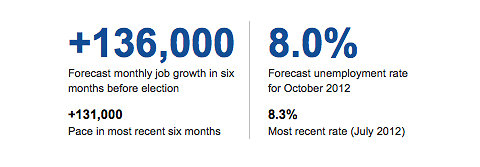Stocks on Wall Street were flat on Monday after the rating agency Standard Poor’s upgraded its outlook for United States credit, and as last week’s employment report eased investor jitters that the Federal Reserve could slow the pace of its stimulus efforts in the very near term.
The Standard Poor’s 500-share index was unchanged in early trading, and the Dow Jones industrial average gained 0.1 percent. The Nasdaq composite was flat.
Stock futures had risen after S.P. raised its outlook on United States sovereign credit to stable from negative.
With an absence of domestic economic news on Monday, investors could use the news as a reason to push the market rally higher.
“This is great news, and good to hear, but Wall Street traders don’t put a lot of emphasis on rating agencies,” said Todd Schoenberger, managing partner at LandColt Capital in New York.
Other news came from Japan, where data showed the country’s economy grew at a much quicker pace in the first quarter than had been previously estimated, an encouraging sign for the Japanese government’s aggressive plan to bolster growth. The Nikkei index jumped 4.9 percent after the data was released.
A report released on Monday by the Organization for Economic Cooperation and Development said that major economies were gradually gaining momentum, led by faster growth in Japan and the United States.
But other data over the weekend pointed to risks that China’s economic growth would fall further in the second quarter. Export growth in May was weak in China, the world’s second-largest economy after that of the United States, while imports fell.
European shares were mixed by early afternoon, having first fallen when mining stocks were hurt by the weak Chinese data.
“China is the elephant in the room,” said a Saxo Bank strategist, Steen Jakobsen, adding that the latest data “shows that real growth in the country is at best 5 percent right now, which means the growth component of the earnings of companies needs to be adjusted.”
Among American companies, McDonald’s said sales at its established restaurants around the world rose in May, sending its shares up 1.6 percent in early trading.
With an absence of domestic economic news on Monday, investors are likely to continue to digest last Friday’s United States job market report, which showed that the economy added 175,000 jobs in May. Markets have been bumpy in recent weeks as investors have tried to determine when the Fed may slow its $85 billion a month bond-buying program.
“It wasn’t too hot, it wasn’t too cold,” Rockwell Global Capital’s chief market economist, Peter Cardillo, said of the employment report.
“Due to global economic weakness, and modest growth here in the States,” he said, “the Fed rhetoric will likely tone down, and I think the markets will be convinced there will be no trimming of Q.E., at least not until toward the end of the year.”
“That should re-energize the bulls,” he said.
Apple’s chief executive, Timothy D. Cook, takes the stage at the company’s annual developers’ conference on Monday, this time to reveal what is expected to be a more modern-looking mobile operating system.
AstraZeneca, the British drugmaker, is to buy a respiratory drug specialist, Pearl Therapeutics, for up to $1.15 billion as part of its drive to rebuild its product pipeline via deal-making.
Decades-old laws barring foreign ownership of farmland in Iowa, Missouri and at least three other Midwest states may complicate the planned purchase by China’s Shuanghui International of the American pork company Smithfield Foods for $4.7 billion.
In currency markets, the dollar gained 1.4 percent, to 98.90 yen, extending a recovery from two-month lows hit on Friday. Against a basket of major currencies, the dollar rose 0.25 percent after experiencing its biggest weekly fall since January 2012 last week.
The yen’s fall, which improves the outlook for the country’s exporters, was a factor in the Nikkei’s 4.9 percent rise on Monday, its biggest one-day gain since March 2011. The Nikkei has now swung by more than 3 percent in all but two of the last 11 sessions, five of those by more than 4 percent, making it one of the most volatile periods in Japanese stocks since the height of the financial crisis in 2008.

Article source: http://www.nytimes.com/2013/06/11/business/daily-stock-market-activity.html?partner=rss&emc=rss
